
Growing New Greens
- Tags
- Citizen Science
How do you choose what plants and varieties you want to grow in your veg plot? For some it’s a question of flavour, yield, or whatever free seeds they have to hand. But for many, cultural influences play an important role.
To understand this better, we ran a Growing New Greens project in 2023/4 to assess the importance of cultural values when choosing plant varieties, with a focus on amaranth. A partnership between Coventry University, Warwick University, Ecopark in Birmingham and the Comfrey Project in Gateshead, the project was funded by the Natural Environment Research Council.
You may also like
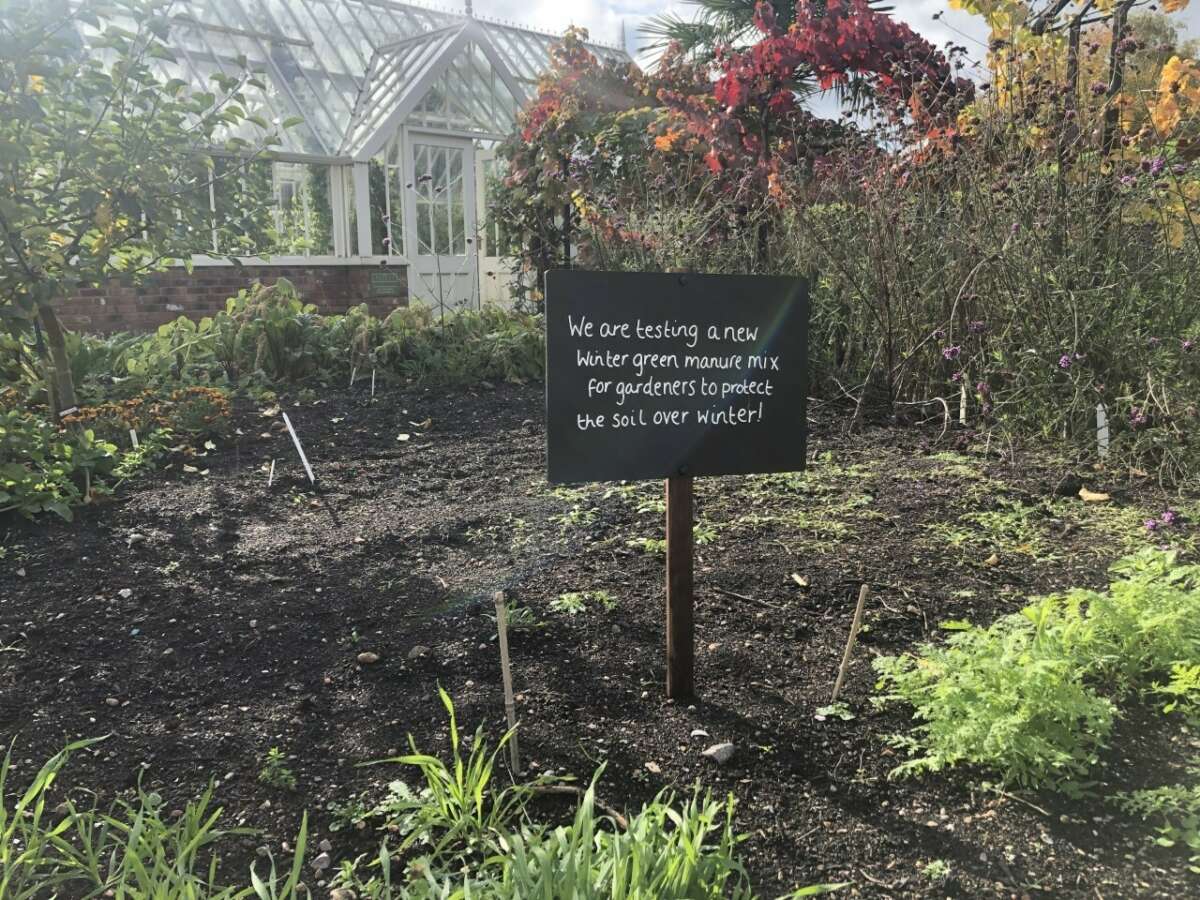
Aims of project 🔗
People use plants in many ways, so there is never going to be a one-size-fits-all solution. We need to maintain a diverse range of varieties to suit everybody.
The aims of Growing New Greens was to:
- Increase community involvement in environmental science through growing multicultural food plants.
- Develop ways to evaluate plant varieties that consider people's cultural values.
We decided to use amaranth as a model plant as it’s a novel plant in the UK, but many immigrant communities grow it as a leafy food plant. It’s used in lots of diverse ways, is often a reminder of home, and provides a good talking point.
Through the project, we collaborated with participants from many countries including Jamaica, Argentina, Greece, Iraq/Kurdistan, Iran, Bangladesh, Cameroon, Congo, Pakistan, St Kitts, Nigeria and the UK.
This is what amaranth meant to all the people taking part in the project:
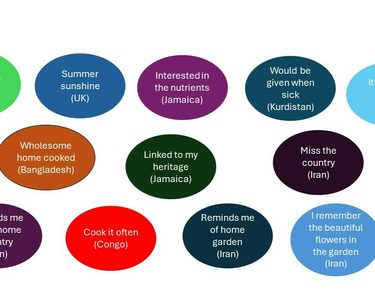
Identifying the ideal amaranth plant 🔗
Participants completed a structured questionnaire to give a picture of their ideal amaranth plant and related to the ways that they might use it in their culture. Find out more about the ideal amaranth plant here.
A pictorial representation was given to participants for them to identify five desirable traits of the plant such as Leaf Size, Leaf Colour, Leaf Pattern, Stem Thickness and Time of Flowering.
If you’re running a similar study, consider these tips for identifying key traits:
- Narrow the identity key down to a low number of key traits rather than a long list.
- Make sure that all the traits are relevant to each crop.
- Make the questionnaire pictorial to add a visual element to the written descriptors.
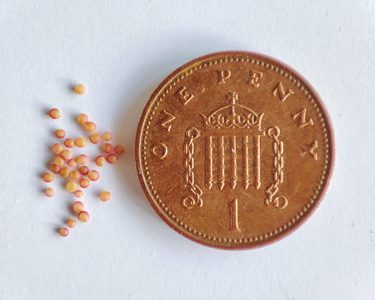
Identifying uses of amaranth plants
For these traits to be linked to their cultural context, the participants were asked 10 questions about how they or their family would use the plant in their country, and what it meant to them. We used several different methods to do this to give us a range of information. Our experience with these methods is summarised in a table here.
Mrs Mcghie from Jamaica
Mrs McGhie has been growing callaloo in the UK for a long time. She tells us about her experiences of growing it both in the UK and in Jamaica.

Ayshe from Bangladesh
Ayshe has recently started gardening with her children, and her family have used amaranth or ‘dugi’ in their cooking.
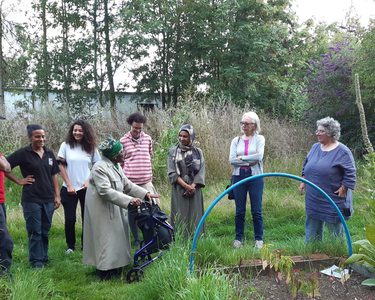
Your guide to evaluating plant varieties at community sites 🔗
-
Running a trial at a growing site is a great way to provide a visual comparison of varieties. It has the advantage over anecdotal comparisons as all the varieties are being grown in the same season under very similar conditions. Here are some tips for giving your varieties a fair trial.
- You want to give the varieties an equal chance, so treat each one the same: measure out the plots and plant the same number of plants in each plot.
- Have an idea of what you want to find out about each variety before you start the season and draw up a plan. This could be very simple things such as:
- When did they emerge?
- When did they flower?
- When did you take a harvest?
- Visit your plot once a week so that you can record your observations.
- Take plenty of photos as this can often be the most engaging way of showing results to people. Think about your photos before you take them. Photos of different plants should be from the same height or distance. Including something to provide scale such as a ruler can help put it into context.
- Bring people to the plots to look at them and discuss.
- Record any challenges as well as your successes as this is important information for future growers. Even, if things failed to grow completely, it’s important to record this and the reasons why.

-
A citizen science trial is an opportunity to get more people involved in trialling a variety. It has the advantage of being part of the ‘learning and discovery’ at the same time.
A trial needn’t be complicated, it could be as simple as giving people three varieties and asking which one they prefer at the end of the season.
You will need to keep in contact with the people, before, during and after the trial to keep them engaged and collect feedback.
Here are some tips to running a citizen science trial:
- Plan your methods in advance.
- Consult with the people who are carrying out the trial beforehand to make sure your expectations are realistic. Will they be able to do what you’re asking?
- Give a clear set of instructions for what you want people to do – stress the importance of treating each variety in the same way.
- Keep it as simple as possible so that people are not overwhelmed. Three varieties is probably the maximum that most people have the space and time to try.
- Plan out key dates that you would like people to do things (e.g. taking a harvest or tasting) then send out reminders and updates to keep people engaged.
- Feedback the results afterwards and set up a time to discuss the results.
Our citizen science trial produced some interesting headlines, which support the importance of maintaining diverse collections for food diversity.
The Intergovernmental Panel on Climate Change (IPCC) has stated that access to diverse seeds is a key strategy to ensure we are able to continue to produce the food we need as climate change impacts become more severe. Learn more about our headline findings here.

-
You will need to characterise varieties, so you know how it behaves, and also to make sure it’s distinct from any other varieties that exist.
Characterisation is a methodical way of describing the features of a plant variety, such as leaf shape and colour using a key. It allows you to compare varieties using a ‘key’.
Tips for characterising plants in a community setting:
- Simplify the characterisation sheets if possible.
- Make sure that all the questions are easy to answer, and explain any botanical technical terms.
- Use pictorial representation, if possible, to make the written descriptors easier to understand.
- Characterisations can add greatly to the length of instructions. This can put people off from taking part in the trial, so attach it as a separate sheet marked optional.
- Carrying out the characterisation as a group exercise together can help make it seem less daunting.
- Do some background research on the cultural background to put the characterisation into a cultural context, e.g. some cultures may use the leaves so would prefer late flowering plants, whereas others may use the seeds and prefer early flowering.
Keys for different crops can be found on the International Union for the Protection of New Varieties of Plants (UPOV) website.
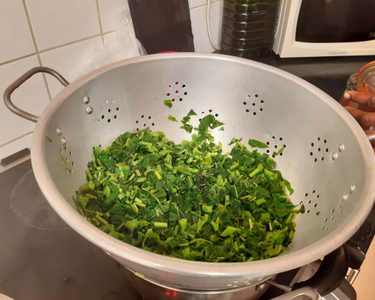
-
There’s little point in a variety yielding well, if it doesn’t taste good! Taste tests are a valuable part of assessing a variety. In setting up a taste test, it’s important to ensure that each variety is treated in the same way.
Tips for setting up a taste test:
- Ensure each variety has a similar representation of parts harvested (e.g. leaf and stem) and is cooked for the same length of time.
- Attempting to evaluate more than three varieties can make it difficult for people to objectively compare them.
- Keep any questionnaires simple. Include multiple choice answers and not too many questions.
- Do a preliminary taste test so that you have an idea of what tastes people are likely to experience so that you can provide them an informed choice, e.g. for a leafy crop you might write: ‘bland’, ‘peppery’, ‘grassy’ or ‘earthy’.
- A simple ranking of the varieties (best, middle worst) provides useful data and is quick and easy for people to do.
- Leave room for comments and opinions.
Doing a taste test revealed some interesting findings – look at our case study here. You can also download an example taste testing sheet here.

Want to take part in our members experiments?
Play a part in our vital citizen science research and lots more when you become a Garden Organic member.